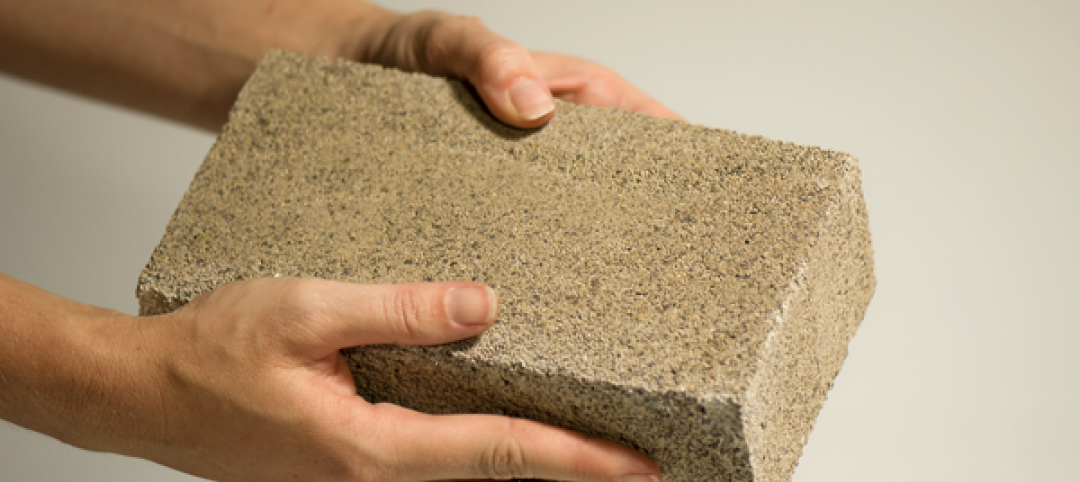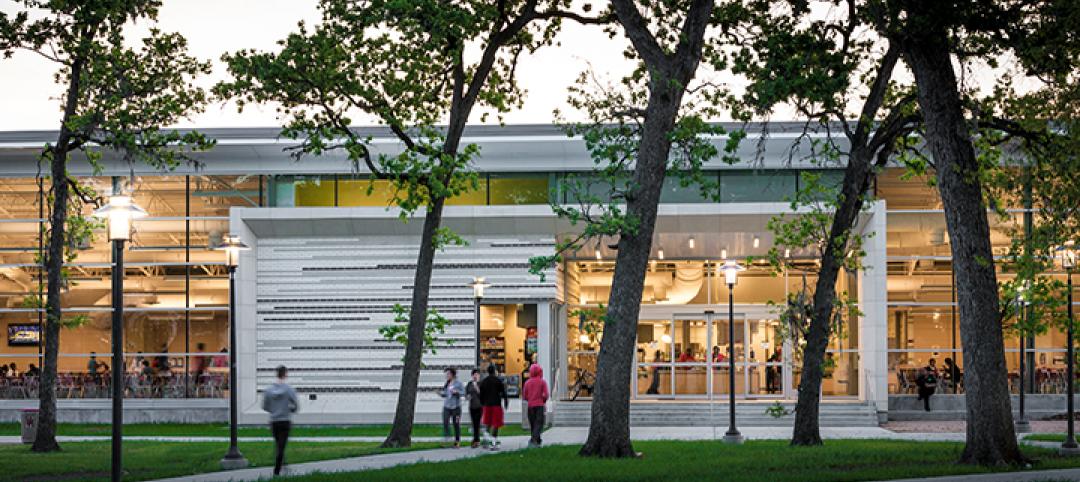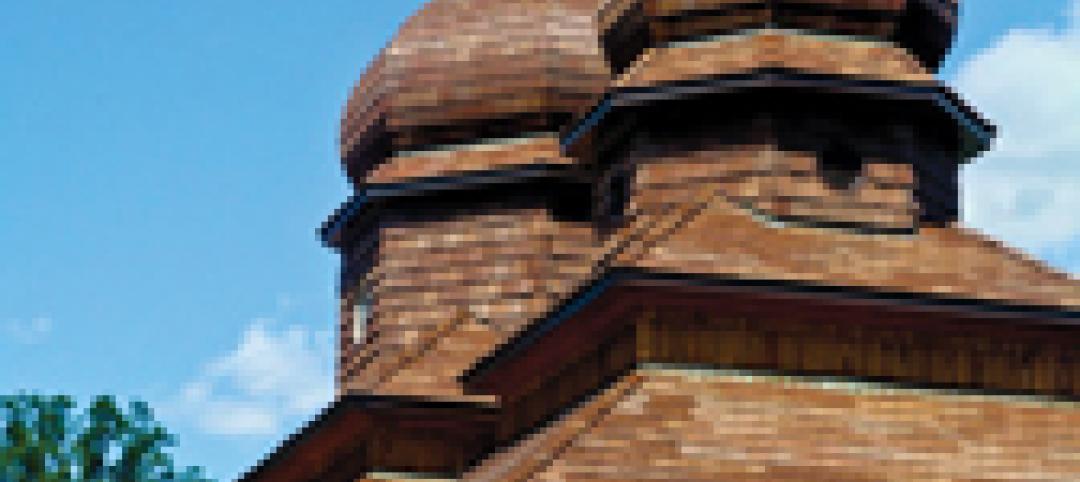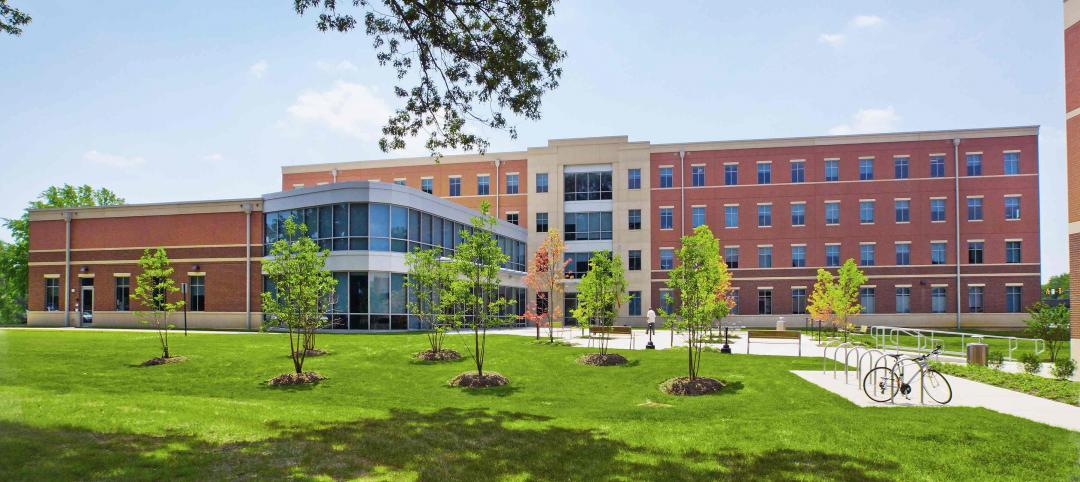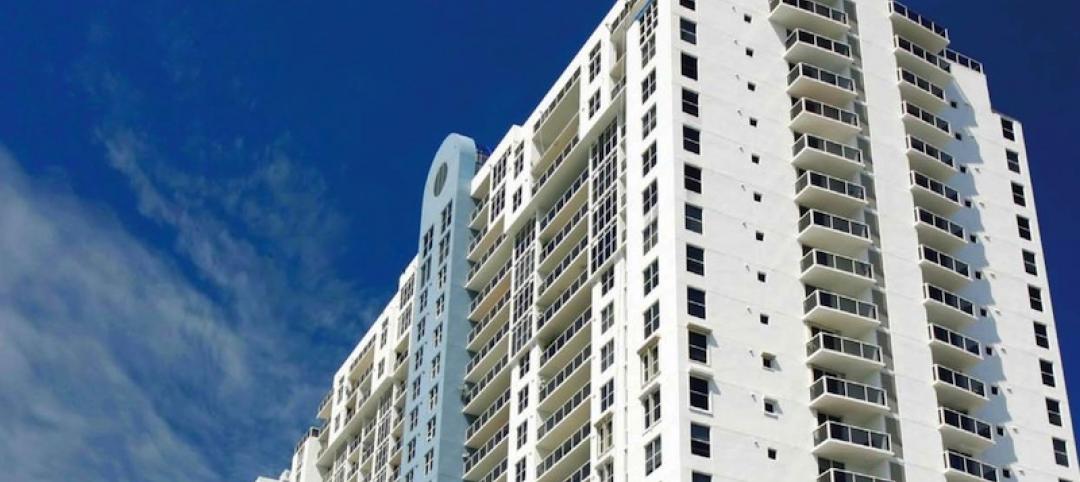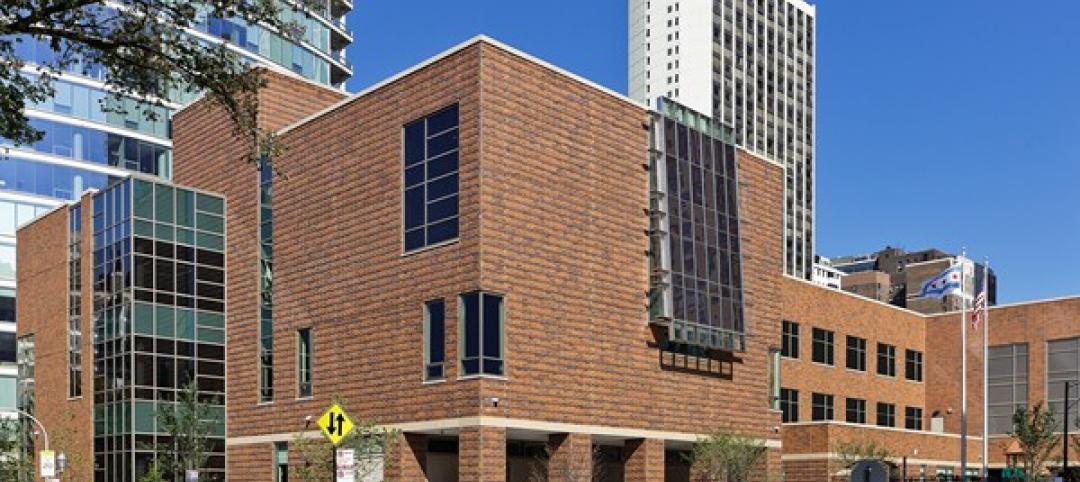Johns Hopkins Hospital operates a dense, urban medical campus in Baltimore with an outsize global reputation. Nestled amid the pioneering clinical and research facilities is the Nelson-Harvey Building, a 1970s-era modernist structure with narrow ribbon windows and long expanses of brick colored to match the nearby Halstead Building and the 1880s Billings Building, a campus landmark with its classic dome.
After opening a major new facility next door, the Zayed Bloomberg complex, the hospital began renovating existing facilities on its East Baltimore campus. The nine-story Nelson-Harvey was a candidate for an interior renovation.
After decades of wear, the hand-laid brick envelope of the Johns Hopkins nine-story Nelson/Harvey inpatient facility began failing. The architectural firms Wilmot Sanz and Ayers Saint Gross needed a solution that met two criteria: one, that is was lightweight enough to prevent any need for additional superstructure or foundation costs; and two, that the facility would be able to stay operational during the exterior renovation.
“Late in the game, during design development, the client determined that we should also address envelope issues,” said Dan McKelvey, an associate principal and building envelope expert with Ayers Saint Gross, describing the existing, hand laid brick façades with a concrete masonry unit (CMU) backup on structural steel. “There were problems including cracking and deflecting brick, and the window system was outdated. The building had no insulation in the wall system, either.”
Factory-applied foam insulation
SLENDERWALL® met the requirements. Its 28 lbs. per square foot specification and unique composite construction allowed for the re-cladding to take place without the removal of the old fascia. The 158 SLENDERWALL panels (27,164 sf) were designed with a factory-applied Endicott brick facing, maintaining continuity with the campus and the original 1970’s exterior.
Johns Hopkins also chose to include factory-applied closed-cell foam insulation and the proprietary H2Out advanced sealant rain screen system with leak detection. The addition of these options provided not only savings in time and on-site trades, but insurance against future air and water infiltrations, as well as continuous insulation adding significantly to the enclosure’s thermal performance and excellent acoustical STC ratings.
The project is being certified under Baltimore City’s Green Stars program, at a level equivalent to LEED Silver. This is the first healthcare project to seek certification under this program.
In March 2013, SMC began delivery to the contractor, Whiting-Turner. Completion of the cladding portion of the project concluded in June. The short schedule showcased the benefits of SLENDERWALL in reduced times and costs for production, shipping and installation, as well as decreasing the need for some on-site trades.
SLENDERWALL architectural precast concrete panel system uses proven technologies to connect a thin layer of fiber-reinforced architectural precast concrete with an interior steel-stud frame ready for drywall application to create a true composite exterior/interior wall. The panels are also available with optional factory-applied continuous closed-cell foam insulation and windows, offering savings in time and on-site labor.
Choosing these along with the proprietary H2Out advanced sealant system, may qualify a project for a no-moisture intrusion guarantee, giving a true one-call responsibility for the building envelope.
For more information:
Easi-Set Worldwide
1-800-547-4045
Fax 1-540-439-2541
info@easiset.com
www.SlenderWall.com
Related Stories
| Nov 27, 2013
Wonder walls: 13 choices for the building envelope
BD+C editors present a roundup of the latest technologies and applications in exterior wall systems, from a tapered metal wall installation in Oklahoma to a textured precast concrete solution in North Carolina.
| Nov 19, 2013
Top 10 green building products for 2014
Assa Abloy's power-over-ethernet access-control locks and Schüco's retrofit façade system are among the products to make BuildingGreen Inc.'s annual Top-10 Green Building Products list.
| Sep 26, 2013
Sheep's wool insulation, bio-brick among Cradle to Cradle product innovation finalists
Ten finalists are competing for $250,000 in prizes from the Cradle to Cradle Products Innovation Institute and Make It Right.
| Jul 19, 2013
Best in brick: 7 stunning building façades made with brick [slideshow]
The Brick Industry Association named the winners of its 2013 Brick in Architecture Awards. Here are seven winning projects that caught our eye.
| May 14, 2013
CalStar products adds second shift to manufacturing plant
Increasing demand for CalStar’s sustainably manufactured bricks, pavers, Thru-Wall units, and wet cast products brings 17 new jobs to Racine area.
| Apr 19, 2013
Must see: Shell of gutted church on stilts, 40 feet off the ground
Construction crews are going to extremes to save the ornate brick façade of the Provo (Utah) Tabernacle temple, which was ravaged by a fire in December 2010.
| Apr 3, 2013
AIA CES class: Sealant repairs that last – hybrid sealants for building restoration
It is hard to talk about restoration without talking about sustainability. This two-hour interactive online course discusses the role that restoration can and does play in the arena of sustainability, and specifically the role that sealants play in sustainable design and repair.
| Mar 29, 2013
Shenzhen projects halted as Chinese officials find substandard concrete
Construction on multiple projects in Guangdong Province—including the 660-m Ping'an Finance Center—has been halted after inspectors in Shenzhen, China, have found at least 15 local plants producing concrete with unprocessed sea sand, which undermines building stabity.
| Feb 28, 2013
BIA opens entries for 2013 Brick in Architecture Awards
The Brick Industry Association (BIA) has opened entry submissions for its 2013 Brick In Architecture Awards—with a new Renovation/Restoration category and new category divisions this year. BIA’s annual awards honor architectural excellence and sustainable design nationwide that incorporates clay brick products as the predominant exterior building or paving material.




